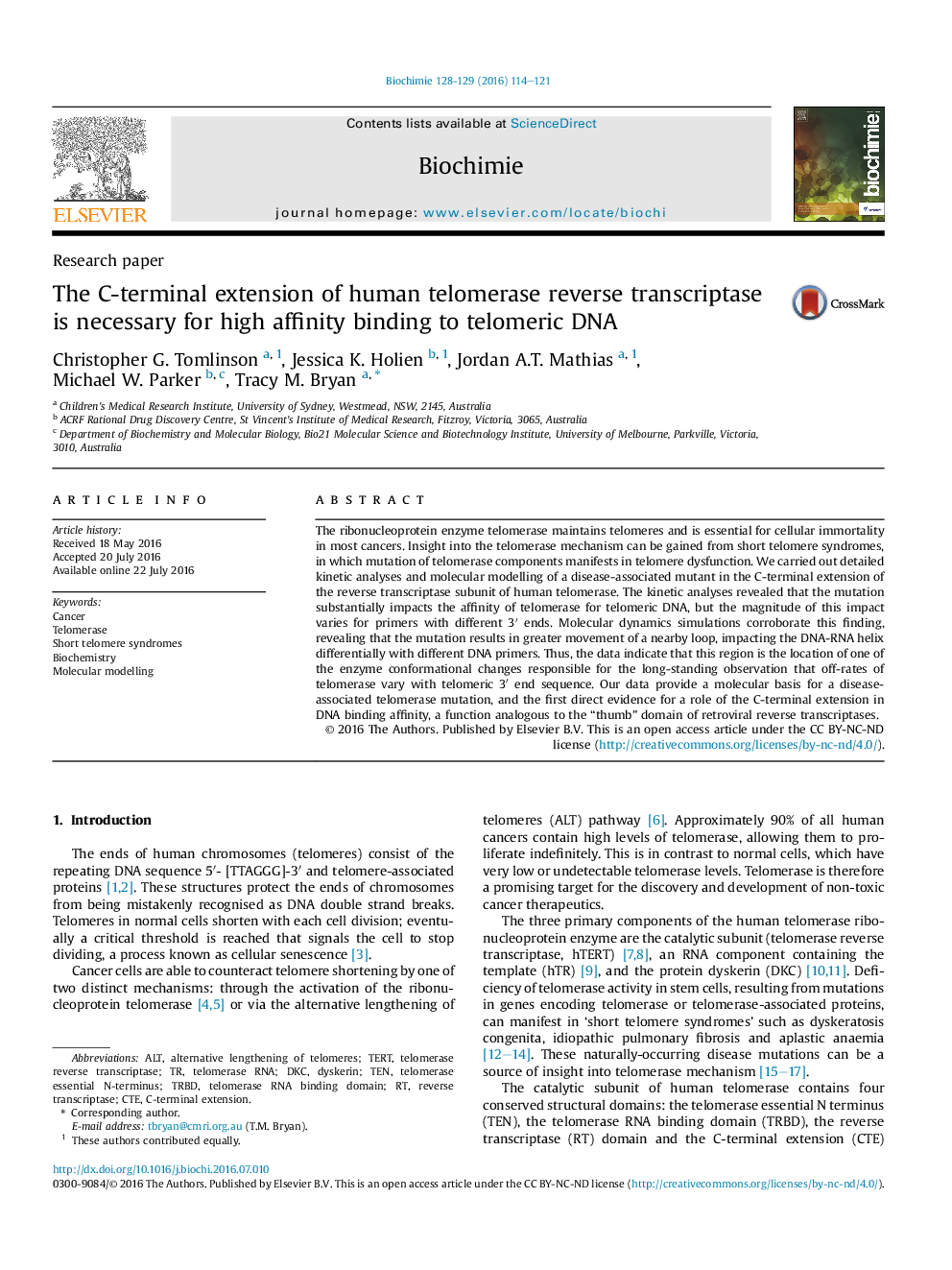| Article ID | Journal | Published Year | Pages | File Type |
|---|---|---|---|---|
| 5509174 | Biochimie | 2016 | 8 Pages |
â¢Identification of a motif necessary for high affinity binding of DNA to telomerase.â¢Molecular dynamics simulations of telomerase identify regions of conformational change.â¢Kinetic analyses reveal biochemical basis for a mutation causing aplastic anaemia.
The ribonucleoprotein enzyme telomerase maintains telomeres and is essential for cellular immortality in most cancers. Insight into the telomerase mechanism can be gained from short telomere syndromes, in which mutation of telomerase components manifests in telomere dysfunction. We carried out detailed kinetic analyses and molecular modelling of a disease-associated mutant in the C-terminal extension of the reverse transcriptase subunit of human telomerase. The kinetic analyses revealed that the mutation substantially impacts the affinity of telomerase for telomeric DNA, but the magnitude of this impact varies for primers with different 3â² ends. Molecular dynamics simulations corroborate this finding, revealing that the mutation results in greater movement of a nearby loop, impacting the DNA-RNA helix differentially with different DNA primers. Thus, the data indicate that this region is the location of one of the enzyme conformational changes responsible for the long-standing observation that off-rates of telomerase vary with telomeric 3â² end sequence. Our data provide a molecular basis for a disease-associated telomerase mutation, and the first direct evidence for a role of the C-terminal extension in DNA binding affinity, a function analogous to the “thumb” domain of retroviral reverse transcriptases.
Graphical abstractDownload high-res image (207KB)Download full-size image
